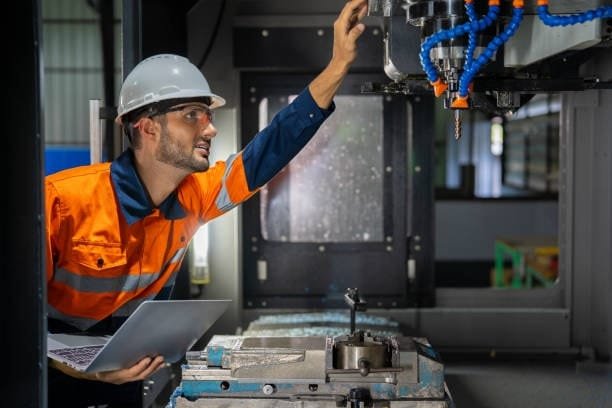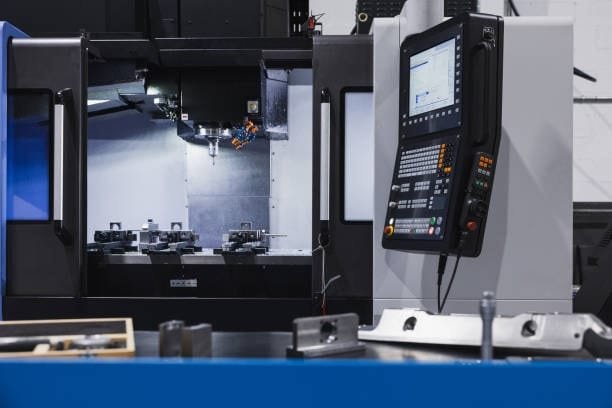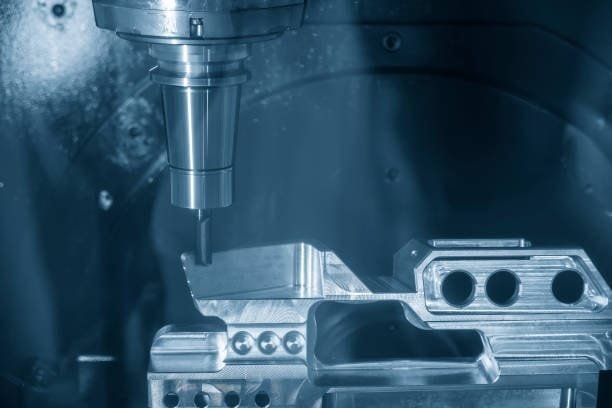Modern manufacturing’s pillar, milling shapes everything from daily tools to aircraft parts. This technique starts with a crucial choice of whether to apply conventional or climb milling. These two methods specify the interaction between a cutting tool and a workpiece, therefore affecting cutting tool’s teeth climb, life, surface finish, efficiency, and more. Mastery of the profession depends on knowing the variations between climb and traditional milling for machinists, engineers, and enthusiasts all around. These techniques are thoroughly discussed in this paper together with their mechanics, benefits, drawbacks, and uses.
What Is Milling?

Let’s lay a foundation before delving into the mechanics of the conclusion climb milling and standard milling. Milling is a kind of subtractive manufacturing in which a workpiece is shaped by removing material using a rotating cutting tool. This is accomplished by means of tool or workpiece movement on the part of the milling machine, which can be either a simple knee mill or an intricate CNC setup. What distinguishes climb milling from standard milling is the orientation of the tool’s rotation in relation to the feed direction of the workpiece.
See a rotating cutter approaching a metal block. The milling process is determined by the bite pattern of the cutter’s teeth on the metal and the movement of half the cutter diameter or workpiece beneath it. We will examine step-by-step how this apparently basic connection affects the machining process.
Climb Milling: The Downward Approach

When the cutter and workpiece feed spin in the same direction, a process called climb milling (or down milling) is executed. Imagine the tool spinning clockwise while the workpiece slides from left to right beneath it. As they move out of the material, the teeth of the cutter gradually reduce the chip size, which begins at the top of the cut when the whole chip width and thickness is thickest. As a result of this downward cutting motion, climb milling is the name given to this process.

How It Works
The cutting forces during climb milling cause the workpiece to be pushed downwards against cutting edge of the machine table or fixture. As it cuts, the tool takes the material and gently drags it along to provide a smooth, flowing action. Starting thick and tumbling to small slivers, the chips are thrown behind the cutter. Once you observe this procedure in use, it seems natural; it’s as though the tool is “climbing” along with the feed direction.
Advantages of Climb Milling

Climb milling is a popular in modern machining since it excels in various fields.
- The cleaner, smoother surface it produces is the result of the cutter’s action, which begins with a big chip and finishes with a thin one. The machine produces a smooth surface without the need for burnishing or rubbing, unlike traditional milling methods.
- Cutting with a less aggressive tool causes less heat, which in turn reduces tool wear. Particularly with carbide or coated tools, lower heat indicates longer tool life.
- Climb milling is cost-effective for large-scale manufacturing due to its lower power consumption, which is achieved by efficient chip removal and downward force.
- Reduced Chatter and Vibration: The pressures push the workpiece firmly against the table, minimizing deflection. When machining flexible or thin objects, this is a blessing.
Disadvantages of Climb Milling

There is no perfect approach; climb milling has drawbacks as well:
- When the gibs are loose or the leadscrews are worn, the cutter on an older machine could experience backlash, which manifests as jerky action or even crashes when pulling the workpiece too hard. While this is less of an issue on CNC machines that have backlash adjustment, it is still something to think about when setting up by hand.
- When it comes to roughing, climb milling is not ideal since it has difficulty removing heavy stock. When working on uneven, rough surfaces or hard materials with scale—like castings or forgings—the first thick chip can overwhelm the tool.
- The lowering and pulling forces demand robust workpiece clamping. Should the part move, the outcomes could be disastrous—that is, broken tools or discarded workpieces.
Best Applications for Climb Milling

In finishing passes when aesthetics and accuracy count, climb milling shines. It’s the standard for CNC machining softer steels, plastics, and aluminum to better surface finish and a mirror quality. Reduced vibration helps thin-walled sections as well. With their stiffness and backlash-free features, modern CNC mills are almost built for climb milling, which is the standard choice in many shops nowadays.
Conventional Milling: The Upward Battle

Up milling, also known as conventional milling, is the opposite of up milling. At this point, the cutter turns in the opposite direction as the feed. Should the tool spin clockwise, the workpiece slides from right to left. When the teeth first enter the material, the chip is smallest; as they move higher, the chip thickens and eventually comes out. The conventional cutting technique is defined by this rising cutting action.

How It Works
Traditional milling involves a downward scrape by the cutter’s teeth on the workpiece, which lifts it off the table and forces it upward. The chips are tossed in front of the cutter as they undergo a transformation from thin to thick. It gets the work done even when there is resistance, much as shoveling snow uphill.
Advantages of Conventional Milling

Conventional milling has advantages as well, especially in particular situations:
- The progressive chip formation is ideal for roughing because it easily handles surfaces with irregularities, high scale, or interrupted cuts, such as slots or castings. Shocking the tool is less likely to happen on hard materials.
- Backlash is tolerated on earlier manual mills because opposing forces prevent the cutter from pulling the workpiece suddenly in the event of machine looseness.
- Though you still need a safe setup to prevent lifting the part totally, the upward force does not need as much clamping power.
Disadvantages of Conventional Milling
Especially in precise work, the trade-offs are rather notable:
- Surface Roughness: Because the tool is in contact with the material for a longer period of time when cutting upwards, the resulting surface is typically less polished and shows tool marks.
- Stainless steel and titanium, which are tougher materials, experience increased tool wear due to the increased friction and heat.
- More effort is required to resist the feed direction, which increases energy consumption and stresses the machine, leading to higher power requirements.
- Vibration and Chatter: Reduced precision results from the workpiece bouncing or lifting under the upward force creating chatter marks.
Best Applications for Conventional Milling
The milling world’s sturdiest workhorse is conventional milling. It works well for roughing out castings, forgings, or raw stock in the beginning stages when a perfect finish isn’t critical. On older machinery, manual machinists typically favor it; therefore, given uncertain or inconsistent material conditions, it’s a safe bet.
The Physics Behind the Fight

Climb vs. climb milling backlash. traditional milling can be better understood if we take a look behind the scenes at the factors involved. Under climb milling, the workpiece is pulled along by the horizontal cutting force aligning with the feed. The vertical force drives down to stabilize everything. Although this synergy lowers heat and friction, it requires a careful configuration to prevent the tool “running away” with the material.
Conventional milling produces a tug-of- war by having the horizontal force oppose the feed. Seeking to raise the workpiece, the vertical force pushes up. Although this resistance creates extra heat and vibration, it also provides the cutting process some tough dependability on less-than-perfect conditions.
Chip formation also conveys a similar tale. While traditional milling’s thin-to–thick chips might clog or recut, particularly in deep cuts, the climb milling process’s thick-to– thin chips evacuate effectively. Because of these dynamics, climb milling has a more contemporary and elegant feel than conventional milling, which has a more rustic and retro vibe.
Machine and Tool Considerations

Cutting depth isn’t the only factor to consider when deciding between the climb cutting and traditional milling; the equipment you use also plays a role.
- Servo motors and ball screws make CNC mills very rigid, and climb milling is perfect for them. The use of conventional milling is preferred by older mills that have acme threads and manual controls in order to minimize problems with backlash rotating tool.
- Tool Material: Carbide tools are ideal for climb milling because of the tremendous demands placed on them, whereas traditional milling, with its slower and steadier pace, may be more suited for high-speed steel (HSS) cutters for processing rough cuttings chip width starts.
- Workpiece materials like aluminum adore climb milling’s grace. Abrasive composites or hardened steels may first necessitate the brute-force method of traditional milling heat generated.
Safety First: What Could Go Wrong?
Milling carries several risks; the technique you choose increases some of them. The pulling action of climb milling can rip an improperly fastened workpiece free, launching it—or the tool. Should fixturing fail, the upward force of conventional milling could raise a part off the table. If pushed too aggressively both can clatter, overheat, or shatter tools tool deflection effects. Wear the right safety gear and check your setup, feeds, and speeds twice before each use. Be cautious; it’s better than going to the emergency room.
Real-World Examples
Now let’s bring this down to earth. On a full CNC milling part, say you are machining a flat metal plate. For the last pass, climb milling produces an incredibly smooth surface with very little effort, making it ideal for components that will be visible. Envision now a steel casting being roughed out on a hand-operated Bridgeport. Conventional milling prepares the crusty surface for a later finish cut by chewing through it without balking.
Hundreds of precise pieces may be climb-milled per day in a production scenario, taking advantage of CNC efficiency stationary flat surface. However, while caring for an antique equipment, a hobbyist may choose to use traditional milling techniques, such as when restoring an engine block. Context is absolutely everything.
Hybrid Approaches: Can You Mix Them?
Sometimes the ideal plan combines both. Clear the bulk with conventional milling; then, for the last pass, change to climb milling climb milling process. The effectiveness, durability of the tools, and quality of the final product are all met by this hybrid strategy vs conventional milling. Many times, CNC applications automate this and dynamically change tool paths. Even hand machinists can swap methods with a short feed direction flip.
The Modern Shift: Why Climb Milling Dominates

In high-tech companies nowadays, climb milling is king. Manufacturers give surface smoothness and cycle time top priority; CNC machines remove backlash issues. Though horizontal milling processes still important, conventional milling feels like a reference to the past—a dependable backup should things get tight. As machines develop, climb milling’s benefits line exactly with the drive for accuracy and efficiency.
Conclusion
Rather than being merely two sides of the same coin, climb milling and conventional milling are two unique tools that a machinist can have in their toolbox tool deflection. Though it requires sophisticated tools and careful setups, climb milling provides elegance, efficiency, and amazing results. Conventional milling thrives in tough conditions or on vintage equipment conventional and climb milling delivers raw power and forgiveness. Your machine, material, and objectives will determine which of them you use. Acquiring mastery over both will empower you to confidently take on any milling task cast iron.

